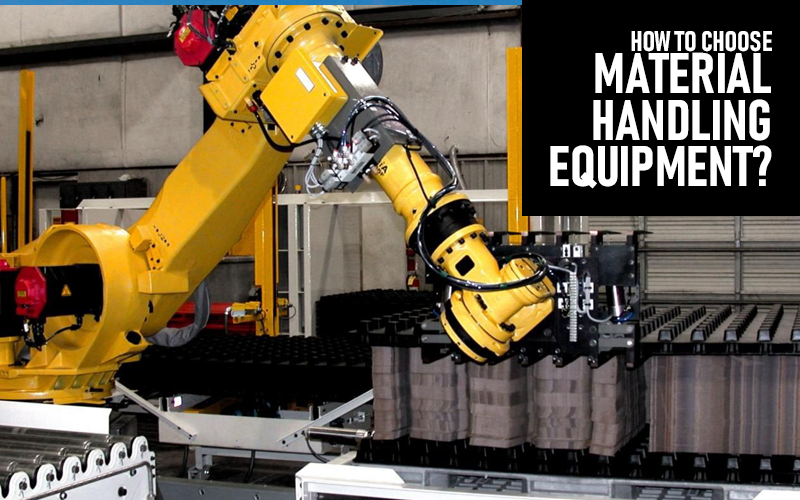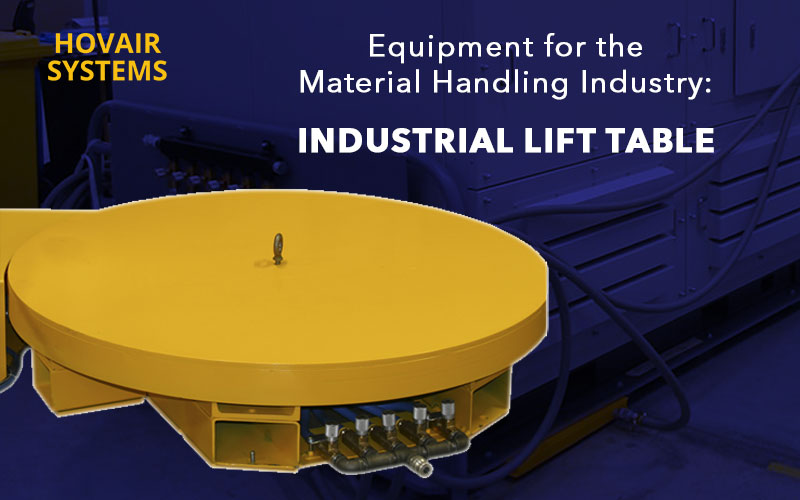Do you know that material flow directly affects the productivity along with your supply chain operations, meaning that the better your material flow will be, the more efficiently your supply chain will move. You might have heard the saying, “There is a tool for everything.” Well, we believe it’s completely true, especially when you’re in the material handling industry.
As mentioned earlier, using the appropriate tools will not only increase productivity, but it’ll also save you a lot of money and will make your supply chain operations much smoother. But it’s easier said than done, as finding out which equipment is ideal for what purpose is the real task.
You should start by inspecting the materials you’re handling; this will help you in finding out the equipment that you’ll be needing. We understand that identifying the ideal equipment for handling respective materials could be difficult; that’s why we’re going to mention a few tips that will help you in choosing the best handling equipment, making your warehouse operations much more efficient.
Understanding your needs
First things first, you need to know that there is equipment designed to handle every sort of material. So, what you need to do is understand and identify your requirements. You can start off by asking yourself the following questions.
- Are the materials sensitive that you’re going to handle?
- What is the frequency of their movement?
- What do you intend to do with them?
- Are the materials fragile?
- Will the material be processed or stored?
- What about the packaging?
Once you have the answers to all these questions, you’ll know what equipment to choose for what materials. Let’s say you are dealing with light materials that need to be moved to the top shelf, so an industrial scissor lift table could the perfect equipment for this task.
Understand the equipment
After understanding your needs, you need to understand the function of every piece of equipment in their particular tasks. While the functions could be complex, but all material handling equipment serves three primary purposes.
Light material handling
Forklifts are usually used for this purpose – materials that don’t get moved often and are usually stored in the warehouse mostly include small containers, pallets, and boxes.
Heavy material handling
It is advised to move bulk materials piece by piece. For this purpose, you might need special equipment that includes silos, trucks, elevators, conveyors, and drums.
Automation
These machines are best for people who have less space and want more work to be. Automated machinery will boost productivity at unimaginable levels. One example of such equipment is Vehicle Turntables – they work great in small spaces and provide the most efficient and safest entry and exit solutions in small spaces.
Processing requirements
Another factor to consider that could help you determine the best equipment for a particular task is how you process your materials. Let’s say that your manufacturing process needs a lot of moving parts, like:
- High-speed packaging
- filling totes, drums, or other containers
Such processes need heavy-duty equipment, and you’ll need to check this equipment regularly, so there are no breaks or halts at the assembly line.
One solution is to have customized automated machines that can make your processes much more efficient right from the start till the end.
What about maintenance costs?
That’s right, getting the machines isn’t one in a lifetime investment. You have to regularly maintain them so they can keep performing at optimal efficiency. Every machine or equipment you buy will need maintenance, some weekly, while some monthly. Therefore, we would advise you to calculate the cost of maintenance before you buy equipment as some machines are more expensive to maintain than others.
There are many tools and software also that could help you in calculating the cost of maintenance for every machine and equipment you own. Another tip is that instead of repairing parts, again and again, it’s better to replace them. This will actually save you money on constant repairs while also reducing downtime.
Machines and equipment designed for handling materials are a must-have for every warehouse or factory owner. Having such equipment on-board will make your operations and processes more efficient while saving you money. If you are in need of such equipment, then you’ve come to the right place as Hovair Systems has been manufacturing material handling equipment for 50 years and are the market leaders of their industry. We have the equipment you need to take your business to the next level.


